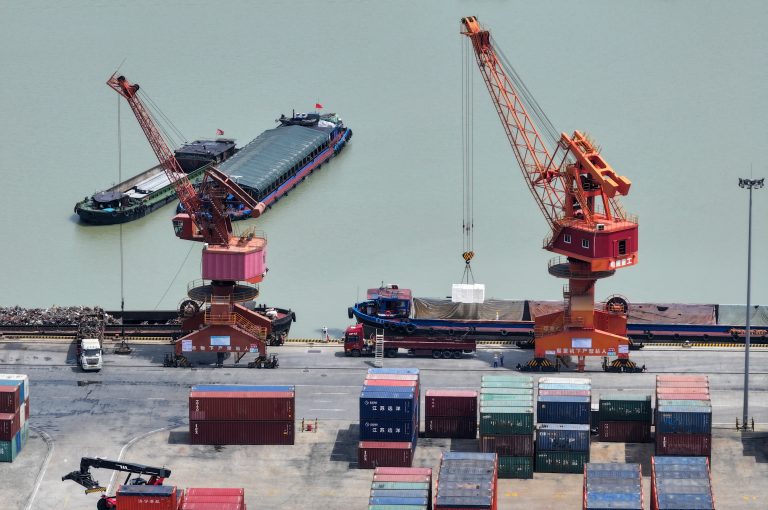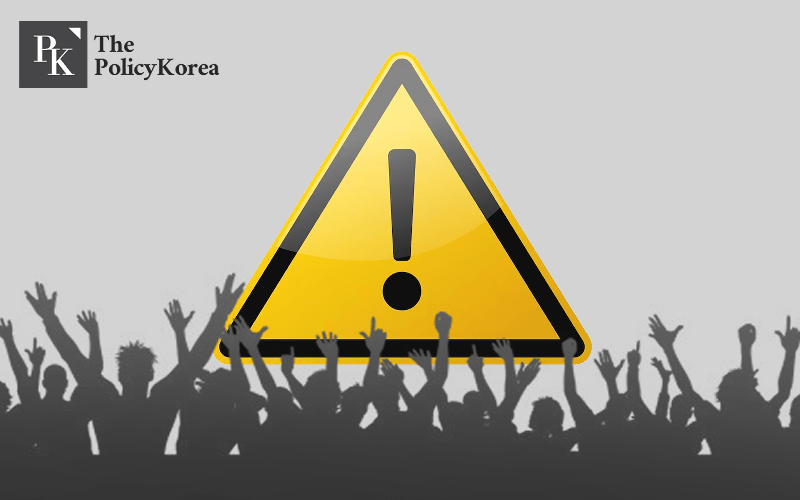[동아시아포럼] 막대한 채권 보유한 중국, 부채함정 가능성 제기
2013년, 시진핑 국가주석 주도로 BRI 출범 중국, BRI 참여국에 양자 간 대출 통해 투자 최근 BRI 참여국, 채무불이행 등 부도 위기
[동아시아포럼]은 EAST ASIA FORUM에서 전하는 동아시아 정책 동향을 담았습니다. EAST ASIA FORUM은 오스트레일리아 국립대학교(Australia National University) 크로퍼드 공공정책대학(Crawford School of Public Policy) 산하의 공공정책과 관련된 정치, 경제, 비즈니스, 법률, 안보, 국제관계에 대한 연구·분석 플랫폼입니다. 저희 폴리시코리아(The Policy Korea)와 영어 원문 공개 조건으로 콘텐츠 제휴가 진행 중입니다.
세계에서 가장 큰 대국(bilateral lender)인 중국이 일대일로 이니셔티브(Belt and Road Initiative, BRI) 참여국들의 채무 증가로 인해 재정적 어려움을 겪고 있다. 이에 중국은 채무국에 대한 지원을 이어가는 동시에 미상환 채무의 문제를 효과적으로 해결할 수 있는 정책 마련을 위해 고심하고 있다.

스리랑카 등 BRI 참여국들, 채무 부담 심화
BRI는 중국 서부와 아시아, 유럽, 아프리카 62개국을 잇는 대규모 경제⸱인프라 구상으로 지난 2013년 중국 시진핑 주석이 제안했다. 그동안 서구 국가들은 중국이 주도하는 BRI를 견제하며 비판해 왔는데 특히 미국은 중국의 성장으로 인해 자국의 가치와 이익이 약화될 것을 우려했다. 여기에 투명하지 않은 절차 운영과 까다로운 대출 조건이 이슈가 되면서 일부 언론과 정책 관계자들 사이에서는 부채함정외교(debt trap diplomacy)라는 지적이 제기되기도 했지만 최근 연구에 따르면 이는 근거없는 주장으로 드러났다. 부채함정외교로 인해 채무국의 재정 여건이 악화되면 결국 채권국도 손실을 입을 수밖에 없는 만큼 그 누구도 승자가 될 수 없기 때문이다.
개발도상국이 국가 채무를 상환할 수 없을 때 발생하는 근본적인 문제는 비단 중국에만 국한된 것은 아니다. 채무를 해결함에 있어 중국을 비롯한 여러 채권국들에게 공정한 접근방법을 찾아야 하기 때문이다. 일례로 방글라데시의 경우 대외공공부채의 53%가 다자간 채권(multilateral creditors)이며 대중국 부채의 비중은 7%에 불과하다. 라오스는 대중국 부채의 비중이 49%에 이르는 반면 스리랑카는 국제 채권보유자의 비중이 35% 수준이다.
현재 일부 아시아 국가들은 채무 이행이 어려운 상황에 직면해 있다. 지난해 4월 스리랑카는 이미 채무불이행(디폴트)을 선언했고 라오스 역시 재정적 위기가 심각해지면서 채무불이행을 선언할 가능성이 있다는 분석이 나오고 있다. 이러한 상황에서 정책 결정자들은 국가 채무에 대한 낙관적 편견에 현혹돼 결정을 미루는 실수를 반복해서는 안 된다. 1970년대 이후 개발도상국에 대한 채무 재조정은 많은 빈곤국들에게 채무 상환의 부담을 줄여줬는데, 지난 50년간 이어져 온 채무 완화의 역사와 주권 채무에 대한 관리 메커니즘을 살펴보는 것은 현재의 상황을 해결하는 데도 도움이 될 것으로 보인다.
파리 클럽, 1988년 이후 채무 면제 등 도입
1956년 출범한 파리 클럽(Paris Club)은 전 세계 22개 채권국으로 구성된 비공식 그룹으로 주로 서유럽의 선진국들을 중심으로 개발도상국의 채무 문제를 조정해 왔다. 1960년대에는 주로 아프리카의 독립 국가들을 중심으로 채무가 누적됐으며, 1970년대 후반엔 세계 각국에 원유를 판매한 중동 산유국들이 거둬들인 달러를 미 국채와 금융시장 등에 다시 투자하는 페트로달러 리사이클링 붐으로 인해 개발도상국의 채무가 증가했다.
이후 1980년대 들어 파리 클럽의 채무 재조정 건수가 본격적으로 증가하다가 1990년대 후반부터 점차 감소하기 시작했고, 이 기간 동안 파리 클럽의 채권국들이 빈곤국의 부채 상환 문제에 대응해 왔다. 이 과정에서 채권국들은 채무국들의 상환이 지연되는 것은 단기적으로 유동성을 확보하지 못해서가 아니라 부채를 상환할 역량이 부족하기 때문이라는 사실을 알게 됐다.
이에 파리 클럽은 1988년 이후 채무 면제를 포함한 다양한 채무 처리 제도를 도입했다. 먼저 고채무빈곤국(HIPC)에 대해 최대 100%의 부채 감면을 허용하고, 다자은행 채무구제(Multilateral Debt Relief Initiative, MDRI)를 마련해 국제금융기구, 채권국 등의 지원금으로 이들의 채무 면제가 가능하도록 했다. 또한 일반적으로 다자간 채권자들에게 채무 조정 협상에서 우선적 채권자 지위(Preferred Creditor Status, PCS)를 부여하는 것과 달리 MDRI는 이같은 조건을 부여하지 않기로 했다. 이후 코로나19 팬데믹이 본격화되자 파리 클럽의 채권국들과 G20는 채무상환 유예 이니셔티브(debt service Suspension Initiative)를 시행하기로 합의했고 2020년 11월, G20 공통 프레임워크에서 채무 처리에 대한 합의가 이뤄졌다.
G20 회원국인 중국도 당시 공통 프레임워크의 기본원칙에 동의했다. 기본원칙을 살펴보면 첫째, 공개적이고 투명한 방식으로 공동 채권자 협상을 진행하고 둘째, 동등 대우의 원칙을 준수하며 셋째, 이를 통해 채권자 간에 채무 완화의 부담을 공정하게 분담할 것을 규정하고 있다. 그러나 일부 비평가들은 G20의 공통 프레임워크를 두고 “중국이 아닌 나라는 투명하고 공정한 방식으로 동등한 대우를 받기 어렵다”고 주장하며 “공통 프레임워크가 효과적으로 작동하지 않을 수 있다”고 지적했다.
중국, 채무국에 대한 채무 완화 등 고려해야
2017년 이후 중국은 과도한 대출로 인한 재정 부담을 해소하기 위해 대출 규모를 축소했다. 하지만 일부 국가들은 여전히 중국에 상환해야 할 채무가 있으며 중국은 이 채무에 대한 완화 조치를 취할 가능성이 있다. 그간 중국은 대출 규모를 줄이는 과정에서 재정적 어려움을 겪는 BRI 참여국에 구제금융을 제공해 왔다. 하지만 중국의 구제금융은 일반적으로 저소득 국가에 대해 채무 상환 조건을 연장하거나 새 자금을 추가 투입해 당장 발생할지 모르는 채무불이행을 막는 데 목표가 있다. 이러한 교정적인 접근방식은 채무국들의 부담을 완화하는 데 초점을 두지 않기 때문에 1990년대 이전 파리 클럽의 채권국들이 그랬던 것처럼 채무불이행의 문제를 근본적으로 해결하지는 못한다는 것이 중론이다.
그럼에도 중국은 공동의 조치와 공정한 분담이라는 원칙을 언급하면서 다자간 채권자가 채무 처리에 참여해 채무 완화의 부담을 분담하는 한편 추가적인 양허성 재원을 확보해야 한다고 강조하고 있다. 중국이 다자간 채권자의 분담과 새로운 자금의 투입을 강조하는 데는 현재 중국의 경제 상황이 영향을 미쳤다. 최근 중국은 국내 부채가 증가하면서 재정적 어려움을 겪고 있는데 중국 정부는 국내 여론을 의식해 대외부채 완화에 소극적인 행보를 보이고 있다. 하지만 중국이 주장하는 다자간 채무의 처리방식은 오히려 채권국들의 비용으로만 탕감되는 경우가 많아 양날의 검이 될 수 있다.
개발도상국들의 채무불이행 가능성이 높아진 상황에서 중국 정부는 파리 클럽의 채무 처리 제도의 변화 과정을 살펴보고 이를 토대로 현재 상환에 어려움을 겪고 있는 채무국들, 특히 중국에 과도한 채무가 있는 국가들에 대해 적절한 조치 방안을 마련해야 할 것이다. 우선적으로 채무를 현재 가치로 환산해 부담을 완화하는 방안을 적용할 수 있다. 또 다른 옵션으로는 기후 위기 대응의 관점에서 기후 대 채무스와프(Debt-for-Climate Swaps)를 구체화하는 등 그린 BRI로 전환하는 방안을 고려할 수 있다. 중국이 부채함정에 빠질 위험에서 벗어나지 못한다면 과거 서구 채권국들이 저지른 오류를 반복하고 결국 재정 청구권을 상실할 수도 있다.
Singapore and China join forces with new green finance taskforce
As the world’s largest bilateral lender, China faces challenges in dealing with the debt distress of some of its borrowers under the Belt and Road Initiative (BRI). Whether China can support those debtors and avoid trapping itself in unpaid debts will depend on its policy choices.

China’s BRI has provoked criticism from parts of the Western world. The United States remains concerned that China’s rise will undermine its values and interests. The alleged lack of transparency and expensive lending terms of the BRI have been central issues. A ‘debt trap diplomacy’ narrative persists in the media and certain policy circles despite recent research showing this is an unfounded myth.
There are no winners in a debt trap strategy, as the debtor, trapped with unsustainable debt, leaves its creditor out of pocket. The fundamental challenge of sovereign debt in the developing world is not China, but rather how to deal equitably with unsustainable debt owed to various creditors when the creditor composition varies from country to country. Bangladesh owes 53 percent of its external public debt to multilateral creditors and only 7 percent to China. Sri Lanka owes 35 percent to international bondholders, while Laos owes 49 percent to China alone.Understanding the claims to a debtor is critical for successfully restructuring debt when it becomes unsustainable.
This is the case for some Asian nations, with Sri Lanka declaring suspension of its debt payment in April 2022 and Laos remaining in debt distress.Policymakers must avoid repeating the same mistake of procrastinating due to their optimism bias. Since the 1970s, a series of debt restructuring for developing countries has resulted in debt forgiveness for many heavily indebted poor countries.
This history of debt relief under the sovereign debt governance mechanism over the past five decades may shed light on how to better address the current debt woes.The Paris Club, an informal yet established forum of mostly advanced Western nations, has coordinated resolution of debt distress in developing countries since 1956. The number of debt treatments under the Paris Club started to increase in the 1980s following a period of debt accumulation amid the petrodollar recycling boom in the late 1970s. Newly independent nation-states since the 1960s, mainly in Africa, also accumulated debt. A series of debt crises then began in Latin America and spread worldwide, until finally subsiding in the late 1990s. During this era of debt crises, Paris Club creditors addressed the unimproved debt servicing prospects of heavily indebted poor countries. They eventually realised protracted rescheduling was due to solvency, not liquidity, problems.
Since 1988, the Paris Club has introduced various debt treatment terms involving debt cancellation. The Heavily Indebted Poor Countries (HIPC) Initiative allows up to 100 per cent debt forgiveness, while the Multilateral Debt Relief Initiative (MDRI) enables a complete cancelation of multilateral debt at the shareholders’ expense, despite multilateral creditors conventionally being granted the de facto preferred creditor status.At the onset of the COVID-19 pandemic, Paris Club creditors and the G20 agreed to implement the Debt Service Suspension Initiative.
This was followed by the G20 Common Framework for Debt Treatments in November 2020.As a G20 member, China has agreed to basic principles in the Common Framework, such as conducting joint creditors’ negotiation ‘in an open and transparent matter’ and ‘comparability of treatment’, which encourages ‘fair burden sharing among all official bilateral creditors’ and private creditors. Yet some critics of the Common Framework claim there is not enough in common between China and other official creditors in financial terms for the framework to be effective.
China has lowered its lending since 2017 to address the debt overhang but some countries’ stock of outstanding debt owed to China remains high and will require China to take debt relief action.
China has been offering bailouts to BRI borrowers in debt distress while scaling down its lending. But its bailout approach typically seeks to simply prevent immediate default through payment term extension for low-income countries and new money for middle-income countries. This remedial approach without debt relief does not resolve the solvency problem, paralleling Paris Club creditors’ procrastination prior to adopting debt forgiveness in the 1990s.In alignment with joint action and fair burden-sharing principles, China insists on multilateral creditors’ participation in debt treatment, as well as their mobilisation of ‘new and additional concessional resources’.
China’s current economic and financial woes, which includes significant domestic debt distress, may explain its reluctance to provide debt relief out of fear of creating moral hazard domestically as well as its insistence on multilateral creditors’ debt relief and new money injection. Yet new multilateral lending can be a double-edged sword even on concessional terms, as non-reschedulable multilateral debt can be forgiven only at the shareholder countries’ expense.Past debt crises give China a lesson to consider upfront debt treatment for countries with unsustainable debt burdens, especially those disproportionately owed to China.
It is worth considering the debt reduction in net present value terms. Another option could be a climate-centric approach such as debt-for-climate swaps, especially if China commits to promoting a green BRI.China should release itself at an early stage from the risk of being debt-trapped. Otherwise, it may make the same mistake that Western creditors made and eventually lose its financial claims.
원문의 저자는 토시로 니시자와(Toshiro Nishizawa)는 도쿄대학교(University of Tokyo) 공공정책대학원 교수입니다.



























